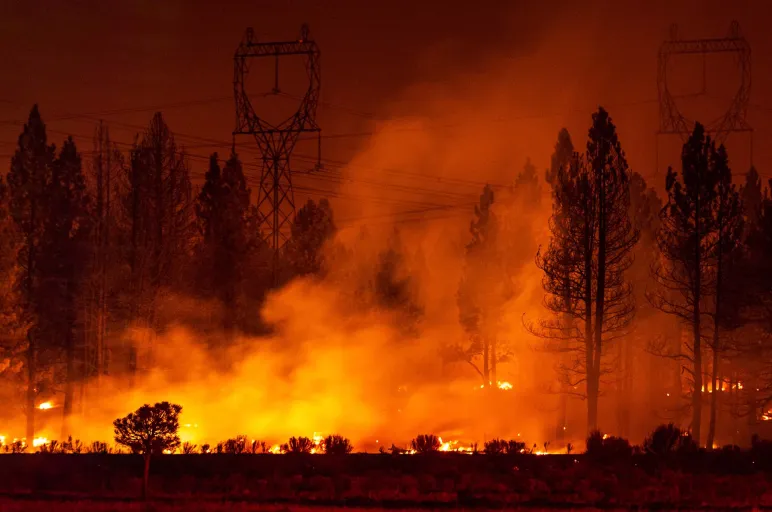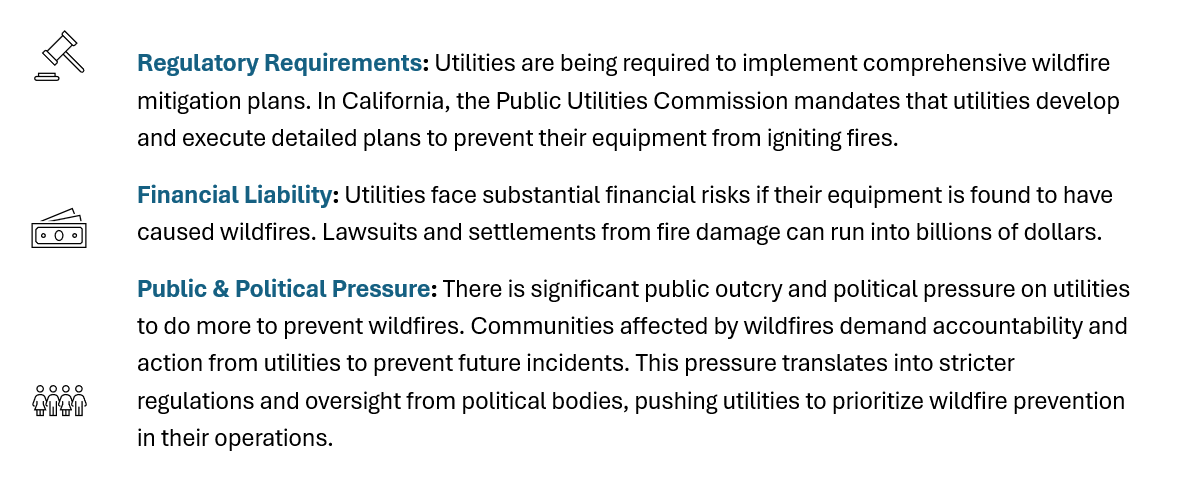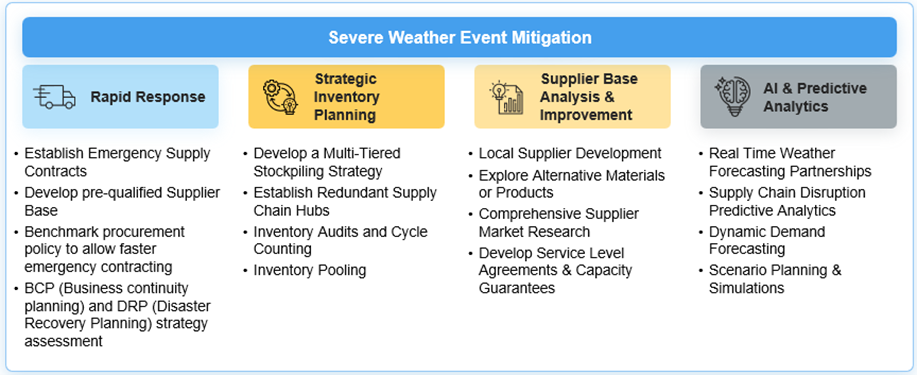
How Utilities Can Leverage Procurement for Effective Wildfire Management
- Wildfires are getting increasingly frequent in the U.S., posing significant risks to communities and infrastructure.
- Electric utilities face pressure to prevent fires and reduce associated risks.
- Procurement teams play a crucial role in securing materials, negotiating contracts, and ensuring rapid response during wildfire emergencies.
November 19, 2024 | Procurement Strategy
Wildfires have become an increasingly frequent and destructive phenomenon, posing significant risks to communities, ecosystems, and critical infrastructure.
Extreme weather (which includes wildfires) was ranked on top in the list of risks most likely to present a material crisis on a global scale, according to the Global Risks Report 2024 by the World Economic Forum.
Since the 1970s, the wildfire season in western states of the United States has extended from five months to over seven months. Additionally, the peak of the U.S. wildfire season is occurring earlier. Between 1984 and 2002, burned area peaked in August. More recently, it has peaked in July.
Pressure to Act on Electric Utilities
Electric utilities are under increasing pressure to control wildfires. This pressure comes from regulatory bodies, the public, and government entities, all of whom are demanding more proactive measures to prevent fires and reduce risks associated with power lines and other utility infrastructure.

Capital Expenditure on Wildfire Mitigation & Management
By necessity, electric utility companies have significantly increased their spending on wildfire response and mitigation in recent years due to the growing threat of wildfires.
Pacific Gas & Electric has planned to spend nearly $6 billion on wildfire prevention efforts in 2024, according to their wildfire mitigation plan. Texas utility company Oncor has earmarked $900 million over the next three years to address wildfire response and mitigation initiatives.
These examples highlight the increased focus, and therefore expenditure on wildfire prevention. That expenditure should be managed appropriately so the stakeholders of the effort receive the greatest benefit possible.
Strategies for Mitigating Wildfire Risks
| Mitigation Strategy | Utility Initiatives | Procurement Opportunity |
|---|---|---|
| Infrastructure Upgrades | PacifiCorp is using $100 million in federal infrastructure funding to upgrade its infrastructure including hardening the grid by covering hundreds of miles of conductor and installing thousands of fire-resistant poles. | Long-Term Contracts for Grid Hardening Materials: Procurement teams can secure long-term agreements for materials like insulated conductors and weather-resistant transformers to support ongoing grid-hardening initiatives. Grid hardening reduces the risk of equipment failure during extreme weather. |
| Undergrounding Power Lines | In 2021, PG&E announced a program to underground 10,000 miles of powerlines. They have now completed 600 miles of undergrounding and plan to underground 250 more miles in 2024. | Supplier Alternatives for Flexibility in Crisis: Establishing broad and resilient supply chains enables utilities to rapidly source critical materials or services during or after a wildfire event. |
| Enhanced Vegetation Management | Texas utility Oncor plans to spend nearly $285 million to expand the existing Vegetation Management program and leverage remote-sensing capabilities such as laser imaging, detection and ranging. | AI and Technology Supplier Contracts: Procurement can negotiate contracts for AI-based systems and predictive modeling tools that help utilities monitor weather conditions and predict wildfire risks. |
| Satellite and Aerial Surveillance | Xcel Energy has implemented UAS (commonly referred to as ‘drones’) for inspecting equipment and LiDAR (Light Detection and Ranging)-equipped helicopter inspections along electric lines within Wildfire Risk Zones. LiDAR sensing creates 3D maps of our equipment to perform wind strength analysis. | Logistics and Distribution for Emergency Preparedness: Procurement can streamline logistics and distribution networks to ensure the rapid deployment of resources during a wildfire emergency. This can include pre-positioning key equipment near high-risk areas. |
| Predictive Modeling & Artificial Intelligence | SCE employs AI-based 3D modeling from Neara to simulate grid responses to environmental factors like wind and dry conditions, helping them identify high-risk areas and prevent wildfires. | Internal Collaboration: Procurement teams can collaborate with internal engineering departments to ensure wildfire-resistant materials, like insulated cables, meet technical requirements for high-risk areas. By working closely with operations teams, procurement can also prioritize sourcing safety equipment for field crews, aligning purchases with the utility’s wildfire prevention and response strategies. |
Impact for Procurement & Supply Chain
Emergency Response:
Utilities should activate an emergency procurement process to ensure the rapid acquisition of critical supplies and services necessary for response and recovery. This process typically bypasses standard procurement protocols to expedite decision-making and sourcing.
Key elements include pre-negotiated contracts with suppliers, streamlined approvals, and prioritization of essential goods.
More and more frequently, we are seeing utility companies turn to strategic partners to develop the strategies necessary to adequately respond to the growing threat of wildfires. Without the right partnerships in place, it is difficult to capture mitigation and response opportunities over the long term.
Securing the continuity of supply, mitigating risks, and ensuring the resilience of operations require not just strategic foresight but also specialized expertise.
Procurement teams are increasingly tasked with navigating complex and rapidly changing landscapes, often without the internal resources to effectively respond.
This is where the expertise of a knowledgeable partner is invaluable. GEP can help organizations conduct comprehensive risk assessments to identify vulnerable areas in the supply chain, particularly those exposed to wildfire-prone regions.
We can also assist in developing contingency plans that include alternative sourcing strategies and supplier diversification, minimizing the impact of sudden disruptions.
Below are ways GEP has partnered with utilities to unlock the value when executing these programs:

Planning and organizing wildfire mitigation programs for 2025 and beyond should start now or you will be late. GEP is ready and able to help lead these efforts to reduce cost and service interruptions.
Sources and references:
https://www.climatehubs.usda.gov/taxonomy/term/398
https://www.epa.gov/climate-indicators/climate-change-indicators-wildfires



